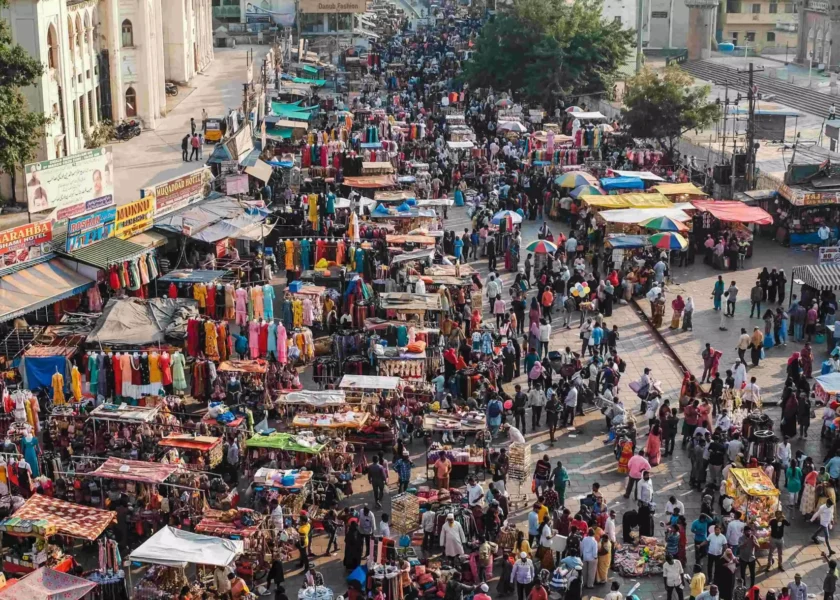The debate between growth and equity is an age old one and one which has occupied the minds of the economists for decades. Ever since I began to study the subject of economics almost 50 years ago when I was a student of economics honours at Delhi University I recall that we used to discuss and have divergent opinions on whether growth should be the objective of economic development for countries or the focus should be on redistribution of resources to bring about equity. Those days the balance was in favour of a socialist economy and so, the emphasis was on measures to be taken to redistribute the resources within the economy to reduce inequality and usher a better quality of life for all. Progressive taxation was suggested by many as one of the major means of bringing about economic development with equity for all citizens. However, the 1970s and 80s showed that economic growth itself is of great importance because if the size of the pie will not be large enough then what will you redistribute. The Indian economy because of its licence, Permit Raj and restrictive industrial policy and trade policy had reached a stage by 1991 when if it did not reform itself it would have become one of the really poor performers amongst the economies of the world. India was in the throes of a serious economic crisis. The 1991 reforms are perhaps one of the most important policy decisions in the contemporary Indian economic history because this opened up the Indian economy and the vast number of changes that one sees in the economy today are because of this opening up. I recall before this there used to be only Fiat and Ambassador cars in the country and Maruti had just about made an appearance. However, after 1991 with the opening up of the economy we can now look around and see the huge number of cars and car makers around so that the customer is now having a problem of choice. This is the story in any sector of the economy if one looks around, therefore, one can say that the 1991 reforms took India on the path of progress and development. Today in 2024 if we are the fifth largest economy in the world, we can give a lot of credit for that to the reforms of 1991 which set in motion a certain economic momentum.
Whereas it is good to exult about the growth in the Indian economy which at about 7% today is one of the fastest growing economies in the world, we should also be concerned about the fact that inequalities in the economy are rising every day. World inequality lab did a study and according to them the income inequality in India is high and continuously on the rise. Their data shows that in 2022-23, 22.6% of India’s national income went to just 1% in the country which is the highest in the last 100 years. Further the top 0.1% of the population earned nearly 10% of the national income in India.
In terms of wealth inequality the report says that the top 1% has a share of 40.1% in the wealth of the country which is at the highest level since 1961. The share of wealth among the top 10% increased from 45% in 1961 to 65% in 2022-23 and conversely the share of the bottom 50% declined. The scenario is clear- the rich have become richer and the poor relatively poorer. India’s wealth inequality is not as extreme as that of Brazil and South Africa but its incomes inequality is amongst the highest in the world and this would ultimately lead to wealth the inequality.
Paradoxically, between 1960 and 1980 when the growth rate in India was very low the inequality was dropping. It began increasing with the liberalisation of the economy after 1991. It is also interesting to note that the growth in China has been much more broad- based than India with the share of top 1% in income in India being nearly 50% higher than that of China in 2022.
Some people have argued against the data and analysis of the world inequality lab. There are others like the famous economist Thomas Piketty who has argued that increasing the level of taxes could be the answer. The preliminary data from the latest household consumption survey 2022-23 shows a decline in consumption inequality compared to the 2011-12 survey though it needs to be verified once the final data is released. My reaction is that we may quibble over the data but there is no denying that India is facing income and wealth inequality and this is not something to feel very happy about. It is also true that we can look around and see the display of wealth by the “ noveau riche” as a visible indicator of inequality as pointed out by Ajay Chhibber in his article on “An agenda for next Government” in the Business Standard.
Inequality leads to social tensions and makes a large number of people in the country unhappy. Providing a good quality of life to its citizens and thereby make them feel happy must be the avowed goal of public policy in India. Therefore, it is essential to take policy measures to reduce inequality without sacrificing on growth. However, I do not feel that increasing the level of taxation is the answer because countless times in the past in India and in other countries it has been shown that high level of taxation acts as a disincentive for wealth creation and growth.
The human development report (HDR) 2023-24 paints a dismal picture for India by ranking it 134 out of 193 countries. The HDR ranks countries on the parameters of health, education and quality of life. Santosh Mehrotra an eminent economist has calculated that India’s score in HDR comes down by 31.1% only on account of the economic inequality factor. He is clearly of the view that the poor cannot wait for the benefits of economic growth to trickle down. The solution lies in focusing on health, nutrition and education to develop the capacity of our human capital and make sure that India reaps the benefits of its demographic advantage. If we do so then we will be able to provide equality of opportunity to our youth and ensure gainful and productive employment for them. It is only growth with employment which will pave the way for India to move forward on the development path without having to face the ordeal of increasing inequality leading to general dissatisfaction in the people. India needs inclusive and sustainable growth.




